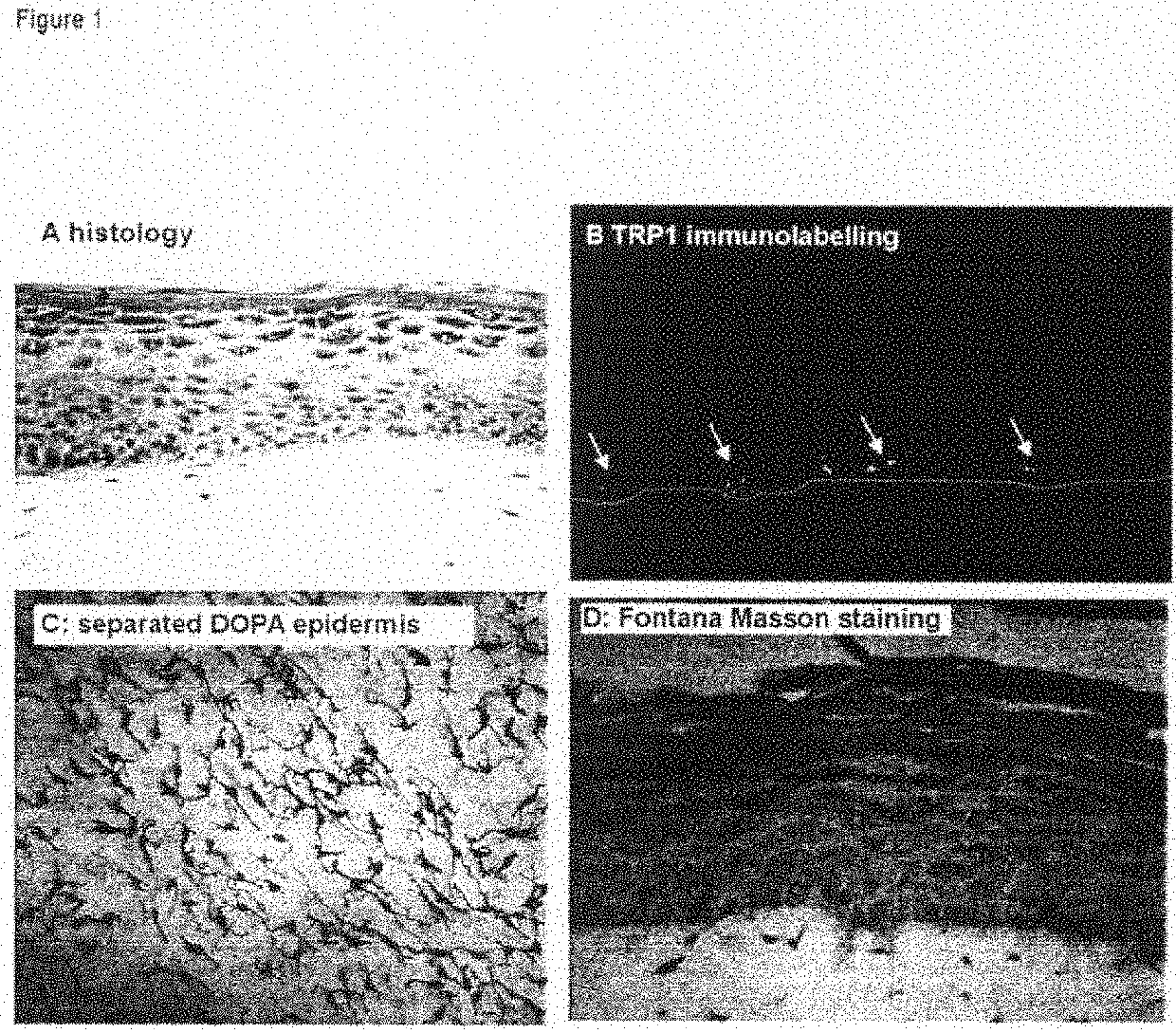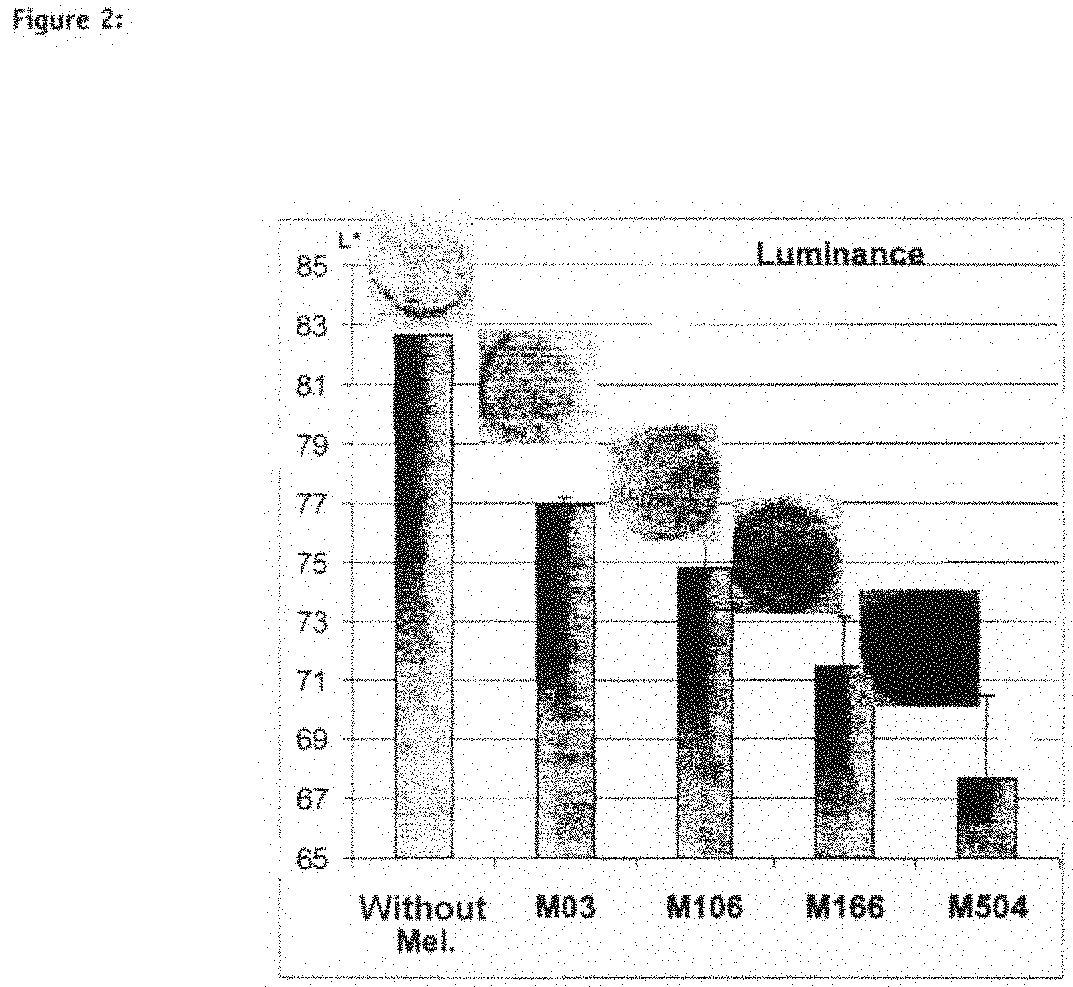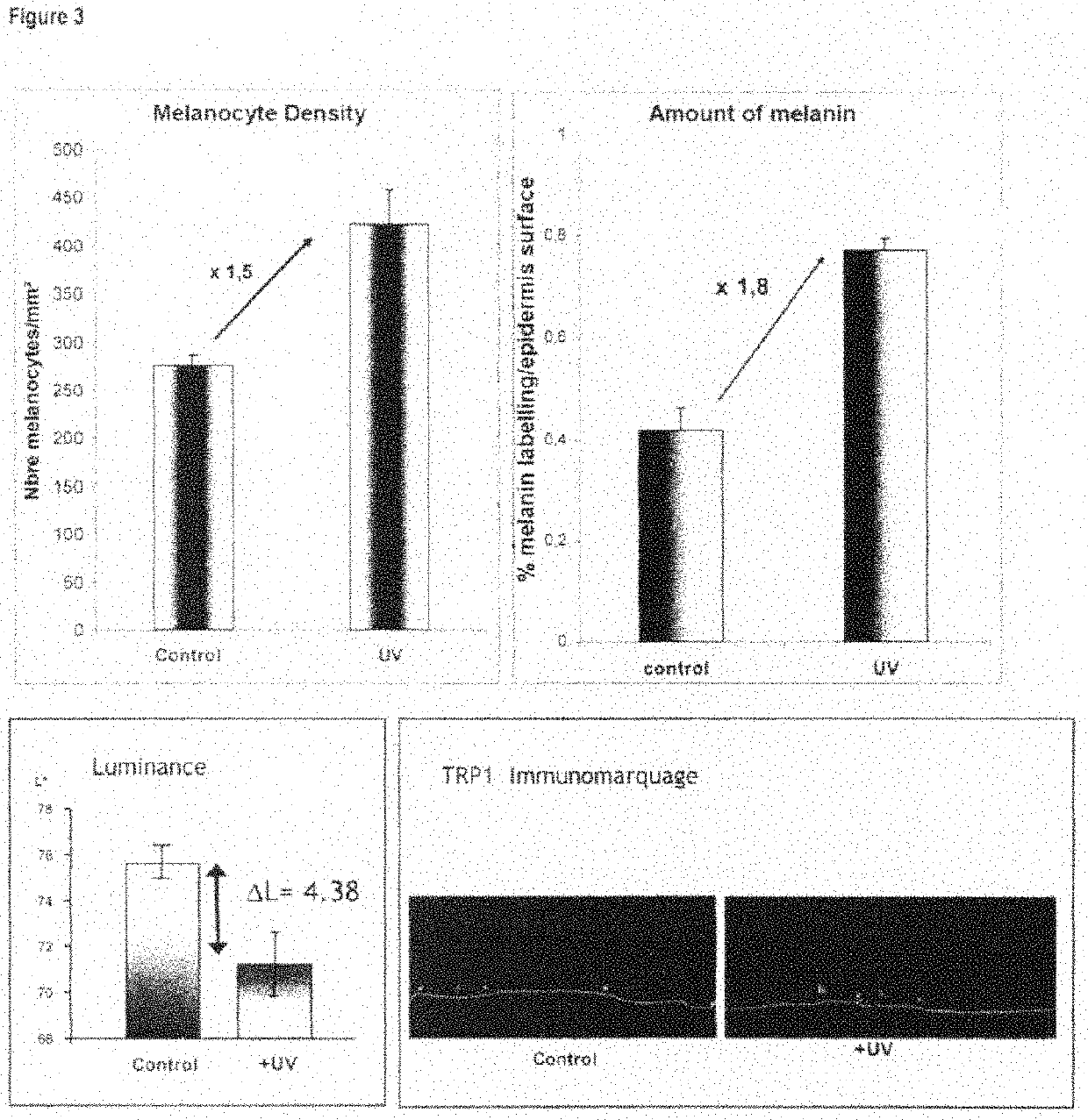Functional pigmented skin equivalent
a pigmented skin and equivalent technology, applied in the field of reconstructive skin, can solve the problems of not being able to evaluate a modulation, not being able to provide an understanding, and not being able to keep the melanocytes in a normal phenotyp
- Summary
- Abstract
- Description
- Claims
- Application Information
AI Technical Summary
Benefits of technology
Problems solved by technology
Method used
Image
Examples
example 1
Preparation of the Skin Equivalents
[0164]Preparation of the Lattices (D-4):
[0165]The dermis equivalents are prepared with bovine collagen I and human fibroblasts derived from dermis.
[0166]The dermis equivalents are prepared with bovine collagen I and human fibroblasts derived from dermis according to the techniques described by Asselineau et al., 1985 (Exp Cell Res., vol. 159, 536-539) and Bernerd and Asselineau 1997 (Dev Biol., vol. 183, 123-138). The Petri dish was precoated with MEM containing 10% of serum.
[0167]Before pouring the collagen preparation containing the cells, a solution of laminin (3% / final volume), collagen IV (1.5% / final volume) and entactin (0.35% / final volume) is added to the mixture, which is stirred vigorously. This suspension is placed in an incubator (37° C.-5% CO2) so as to allow the lattice to contract.
[0168]Seeding of the Keratinocytes and the Melanocytes (D0):
[0169]The keratinocytes and melanocytes are seeded on the dermis equivalent after contraction of...
example 2
Human Pigmented Reconstructed Skin Containing the 3 Cell Types: Melanocytes, Keratinocytes and Fibroblasts (FIG. 1)
[0181]After 7 days of immersion, the skin exhibits a histology and a three-dimensional architecture close to that of human skin.
[0182]It has a stratified and differentiated epidermis made up of the various cell layers (basal, prickle-cell, granular) and a horny layer.
[0183]The dermis comprises live fibroblasts embedded in the collagen matrix (FIG. 1A).
[0184]The melanocytes are integrated into the epidermis and show a morphology and a density similar to those of normal skin (FIG. 1C, DOPA reaction on separated epidermis). They are clearly localized in the basal layer (FIG. 1B, TRP1 immunolabeling, the dashed white line indicating the dermo-epidermal junction), and produce melanosomes and melanin which are transferred into the neighboring keratinocytes (FIG. 1D, staining of melanin with Fontana-Masson).
example 3
Human Pigmented Reconstructed Skin with Constitutive Pigmentation Linked to the Melanocyte Type (FIG. 2)
[0185]The model is capable of integrating various melanocyte strains, from the least pigmented to the most pigmented (sound model) and the phenotype of the reconstructed skin, which is more or less pigmented, corresponds to the melanocyte type used (physiology maintained): in fact, the more pigmented the melanocyte strain (from M03 to M504), the stronger the macroscopic color of the skin and the greater the amount of melanin visible on the section. This macroscopic pigmentation is reflected by a decrease in luminance (FIG. 2, Luminance).
PUM
| Property | Measurement | Unit |
|---|---|---|
| thickness | aaaaa | aaaaa |
| thickness | aaaaa | aaaaa |
| thickness | aaaaa | aaaaa |
Abstract
Description
Claims
Application Information
 Login to View More
Login to View More - R&D
- Intellectual Property
- Life Sciences
- Materials
- Tech Scout
- Unparalleled Data Quality
- Higher Quality Content
- 60% Fewer Hallucinations
Browse by: Latest US Patents, China's latest patents, Technical Efficacy Thesaurus, Application Domain, Technology Topic, Popular Technical Reports.
© 2025 PatSnap. All rights reserved.Legal|Privacy policy|Modern Slavery Act Transparency Statement|Sitemap|About US| Contact US: help@patsnap.com



